In a quiet Kyoto cross-street not far from the bustling riot of commerce by Kiyomizu-dera temple, the sweet smell of taiyaki beanpaste cakes and temple incense is overpowered by a sharp chemical odour. Even though Shota Suzuki’s studio is only a few square meters in size it contains all the necessary tools, knowledge and materials to build a whole universe of life-like metal flowers.
–“The power given to me by nature is something that I cannot live without,” he says with a secretive glint in his eyes.
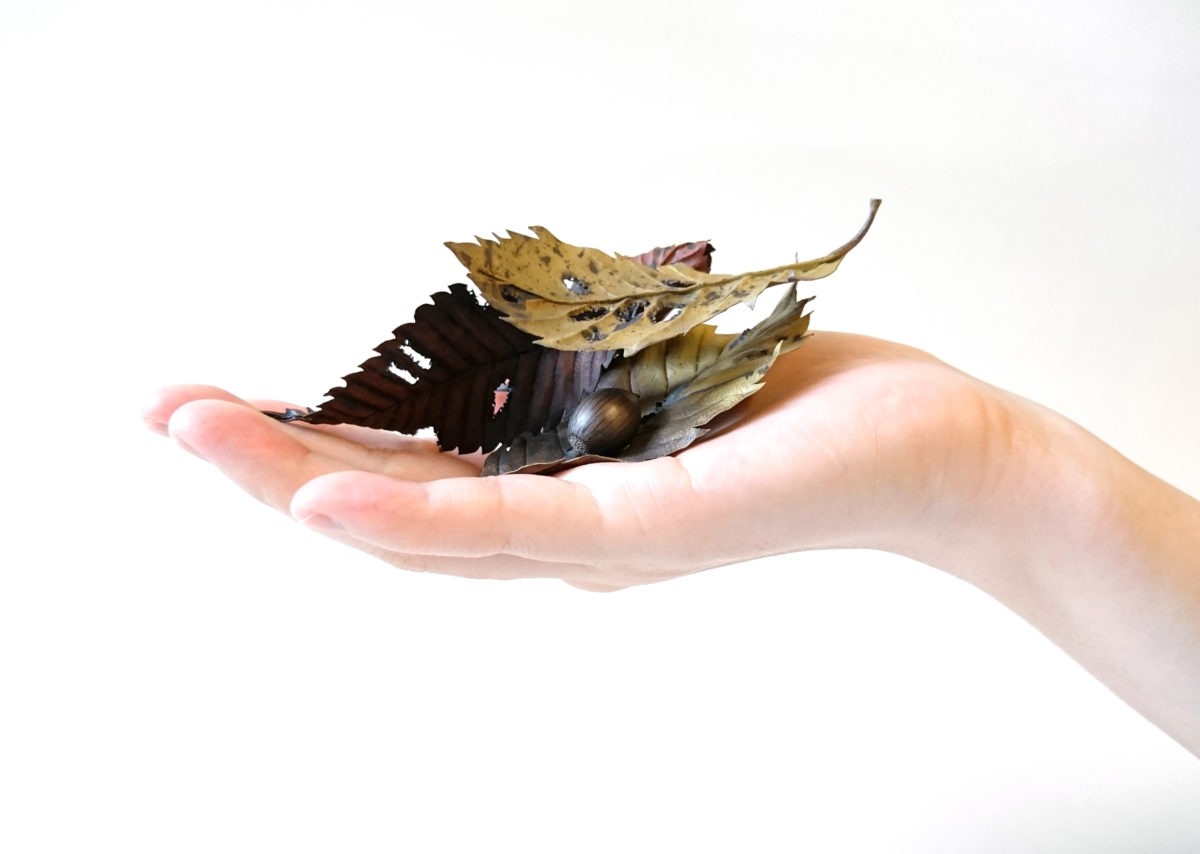
Tiny Piece of Autumn. Photo: Shota Suzuki
An encounter with an old technique of processing metals by carving and changing colours caught Suzuki’s interest and triggered his creativity whilst studying at Tohoku University of Art & Design. Soon Suzuki realized that he wanted to use that traditional craftsmanship to create art, combining his two biggest fascinations in life: nature and metal.
–“In my work, I try to pursue the balance between the beautiful energy and sensual intimacy that I feel from both nature and metals. I can’t explain my love of plant motifs, I just never grow tired of them. I find it most interesting to mix the attributes of hard metals with the softness of flowers. Depending on the flower, I use several types of metal in the same piece, according to their characteristics, colour and strength.”
By capturing subtle seasonal changes and sceneries that can otherwise be easily overlooked, Suzuki wants to awaken people to the beauty that lies around them in their everyday lives. He is inspired by seeing the first spring flower come into bloom or dandelion seeds being blown away by the wind.
–“I don’t go into the mountains purposefully to seek out an object of inspiration, I rather observe what is in my natural surroundings when I go shopping or take a short walk. I like plants that grow wild. Flower shops are the worst: the flowers are cut and one can only see them as dead. I want to sense the energy of something that is living. That is how I have felt ever since I was a child.”
Even though Suzuki’s flower sculptures are strikingly detailed they are not based upon a model and he never makes sketches beforehand, keeping all the elements and structures of the plant in his mind. Once he has decided on an idea he eagerly scours the internet and picture books in order to study the form and characteristics of the plant and scrutinizes dictionaries to find out its origin.
–“I feel like I am paying respect to nature by collecting the right information and avoiding inaccurate depictions. I’ve never practiced the art of ikebana, but there is an element of it that comes through. My work does not portray a plant as it would be in its natural environment, rather I manipulate it in a way that I find to be beautiful. I think the composition especially, like the placement and length of the flowers and stems of the plant, is really important. So in that respect it is rather similar to ikebana.”
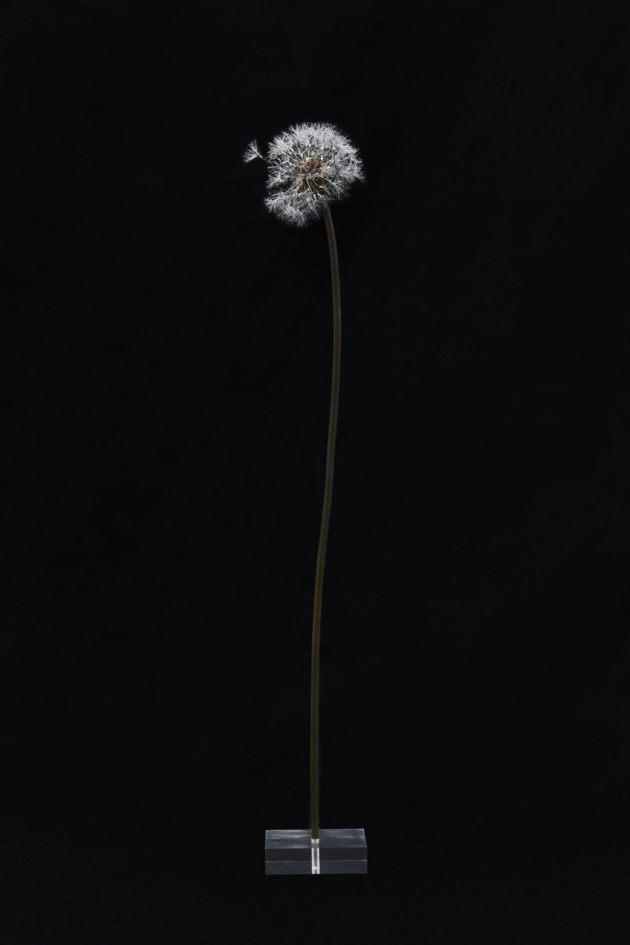
Dandelion. Photo: Tadayuki Minamoto
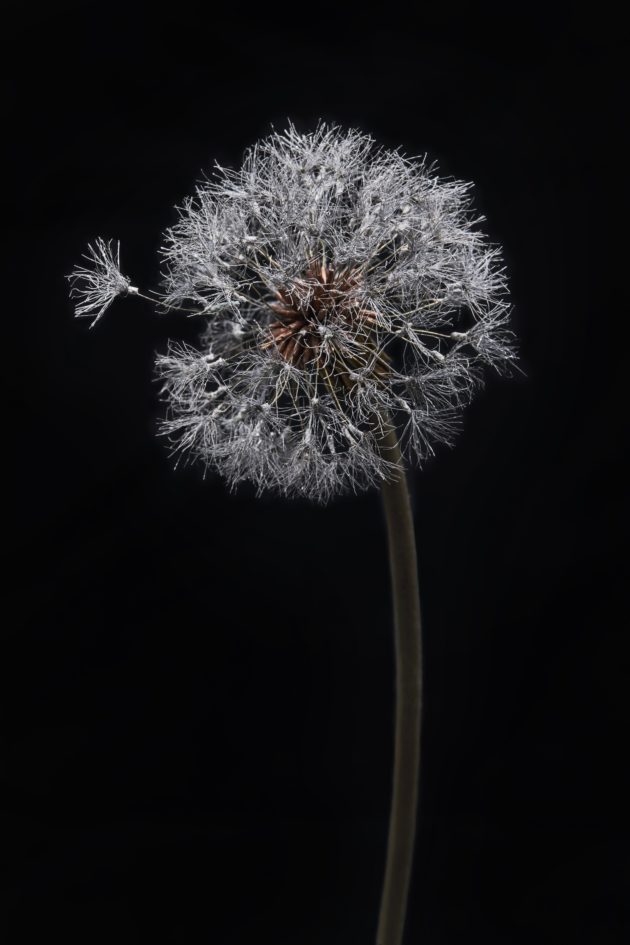
Photo: Tadayuki Minamoto
Most of Suzuki’s flower pieces are made out of copper, brass and silver. He explains, with passionate warmth, about the different colouring procedures that are used for each of his art creations. At the moment Suzuki usually works with a liquid mixture of vinegar and copper sulfate, that makes silver metals turn purple. To create a bluish-green tarnish called verdigris he applies acetic acid to either copper, brass or bronze. And as a process to make a metal change to a black hue he uses the sulphur oxidation method, soaking the piece in a liquid of dissolved sulphur.
–“The colouring process is the most important work phase and also the hardest. The chemical modification is very sensitive and is affected by everything from the weather conditions to the dirt on my hands. It’s hard to make the same colour every time. When I’m working on a piece I therefore command the metal to shape the way I desire or change into the colour that I want to bring forth”, he laughs, splaying his fingers like a mystical wizard.
Traditional patina techniques like the old niiro method, whereby Japanese Daikon radish juice is used to improve and create a wider range of colours, are unique to the industry of metalsmithing in Japan. Suzuki explains that today every artist is researching their own chemical solutions whilst drawing on old techniques and creating entirely new ones.
–“There is an old process called mokume-gane, a pattern welding usually found in sword-making, in which you can use on many types of metals, yet in the past it was only used with bronze, silver and gold. People are now experimenting on titanium, tantalum and other rare metals using high-level techniques and technology.”
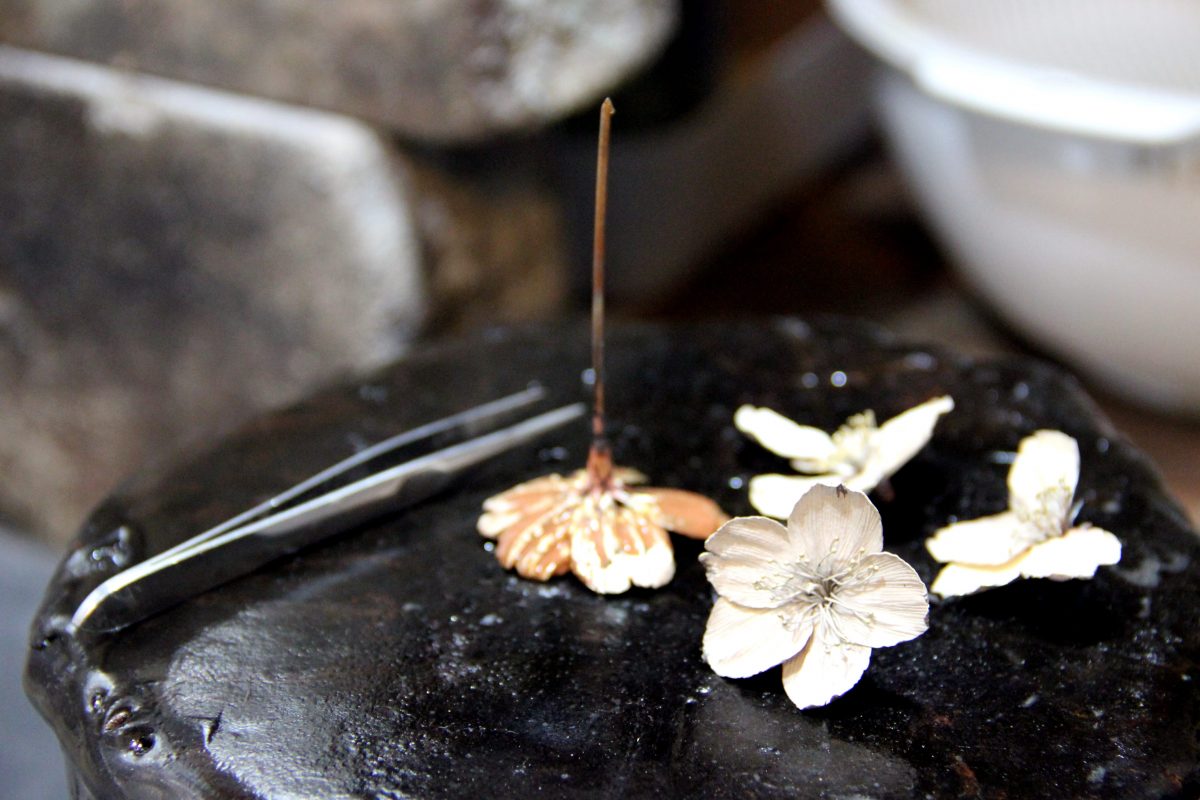
Photo: Lisa Nilsson

Photo: Lisa Nilsson
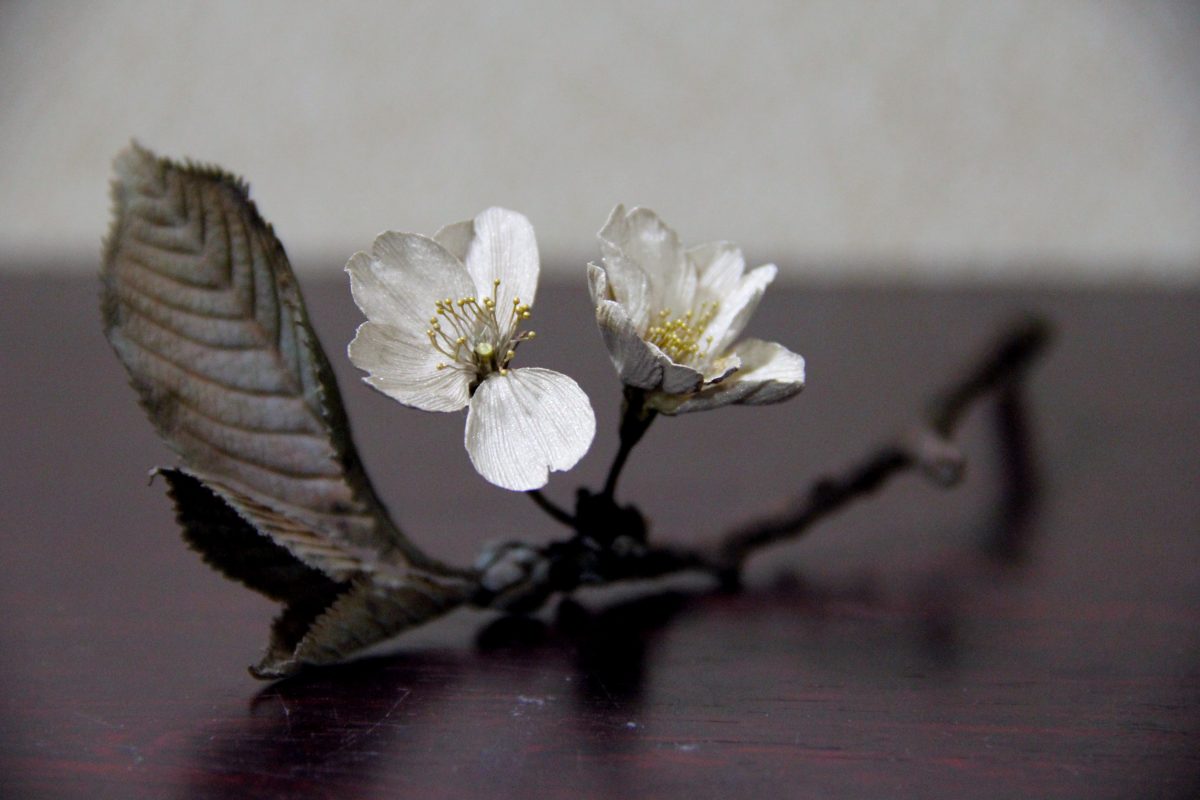
Photo: Lisa Nilsson
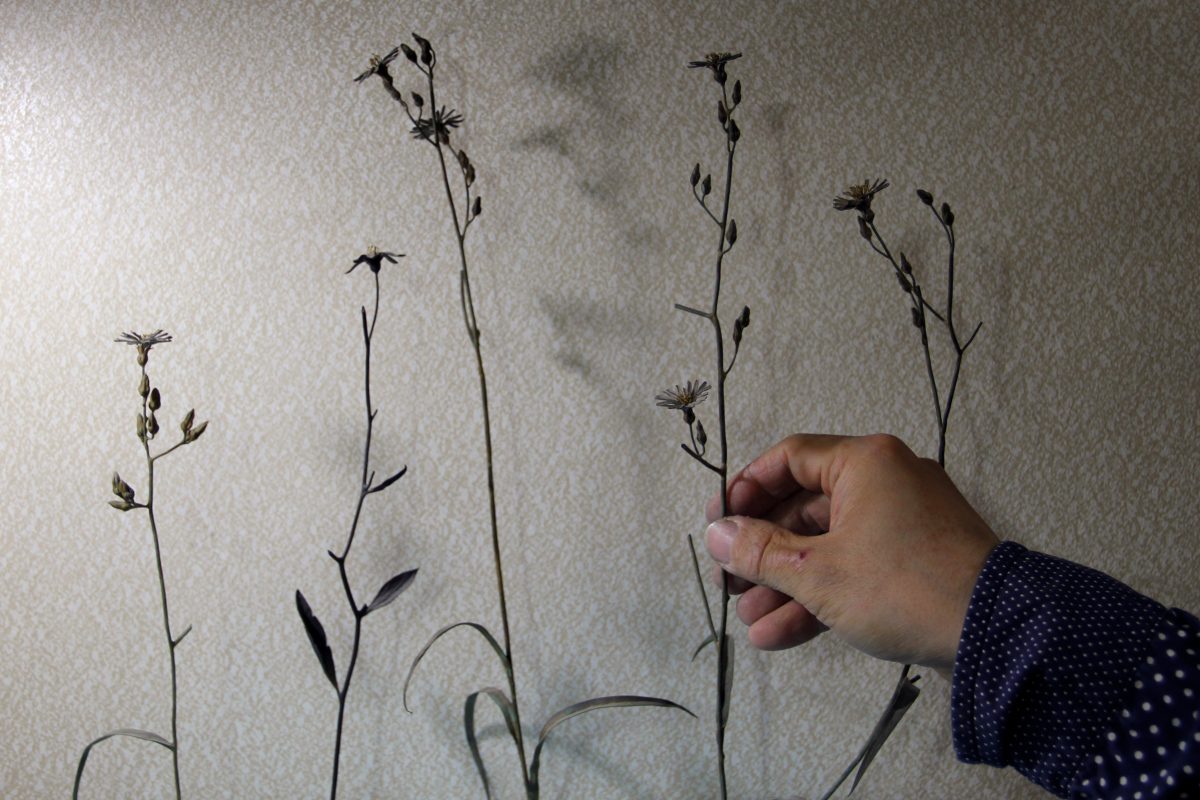
Photo: Lisa Nilsson
As part of the development of his work, Suzuki finds it important to understand how other artists think. He frequently exchanges ideas and advice with other artists around the world to help him improve his way of thinking as a craftsman.
–“In recent years I have really looked up to the American glass artist Paul Stankard. I also admire the Japanese metalwork artist, Kano Natsuo, and how from his designs you can grasp the beauty of his use of blank space and sense of lightness.”
At the heart of Suzuki’s well-organized studio, surrounded by his favourite tools, stands the yanidai, a round, robust work base where all of his metal pieces are cut, carved and shaped. The top of the yanidai vessel is filled with pine resin that when heated becomes quite soft, allowing the craftsman to affix the metal securely in a way that does not damage even the softest of metals, when doing surface decorations. During the work process the vessel can be repositioned as desired.
–“It is an indispensable tool, and because the yanidai is somewhat malleable an impression is left on the resin behind the piece when I’m engraving veins on petals and leaves. I really like those patterns that form and for that reason, I especially like carving out leaf veins”, he says whilst deliberately losing himself in a sakura leaf with his well-used chisel.
Shota Suzuki emphasises the importance of practice. His creativity comes from many failed attempts, combining his experiences with his acquired knowledge.
–“A piece of work is born out of your hands; it is not created while you are sleeping. I wracked my brain about how to replicate a dandelion seed head, but couldn’t come up with an answer. Finally, one day I had a flash of inspiration from where I managed to make the piece. I won’t reveal what my realization was during that work process, it’s a secret!”
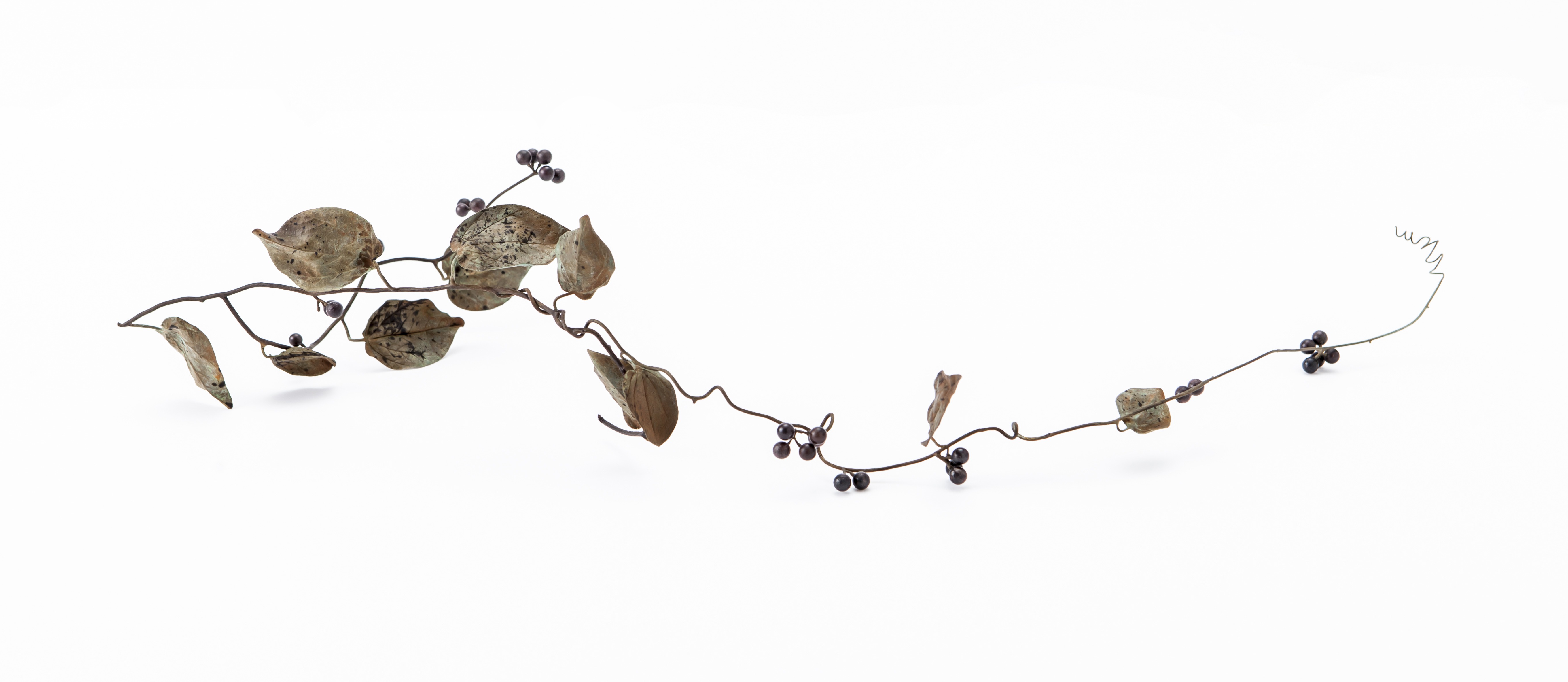
Photo: Tadayuki Minamoto
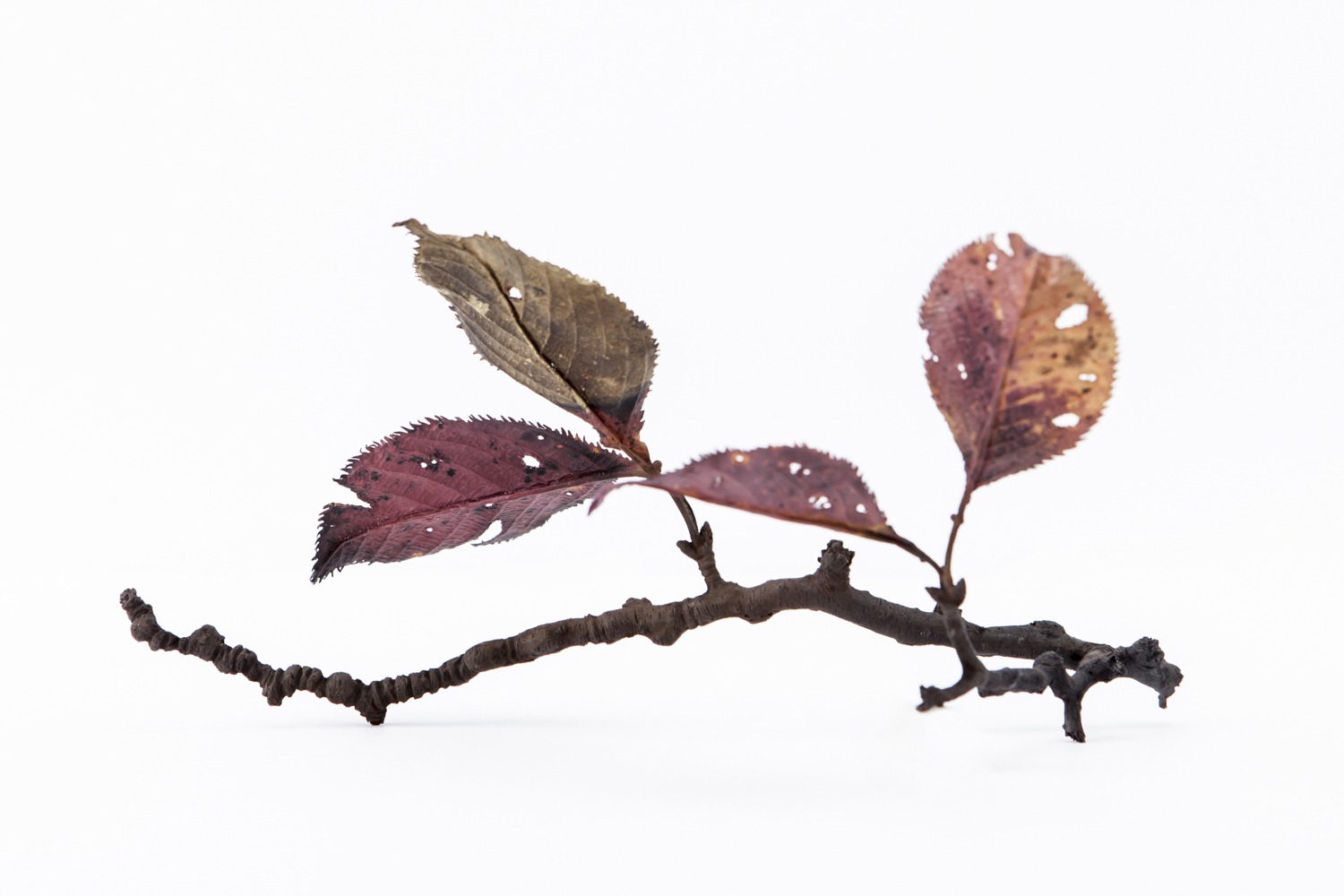
Cherry Blossom Branch. Photo: Tadayuki Minamoto. See a video of Shota making this piece here.
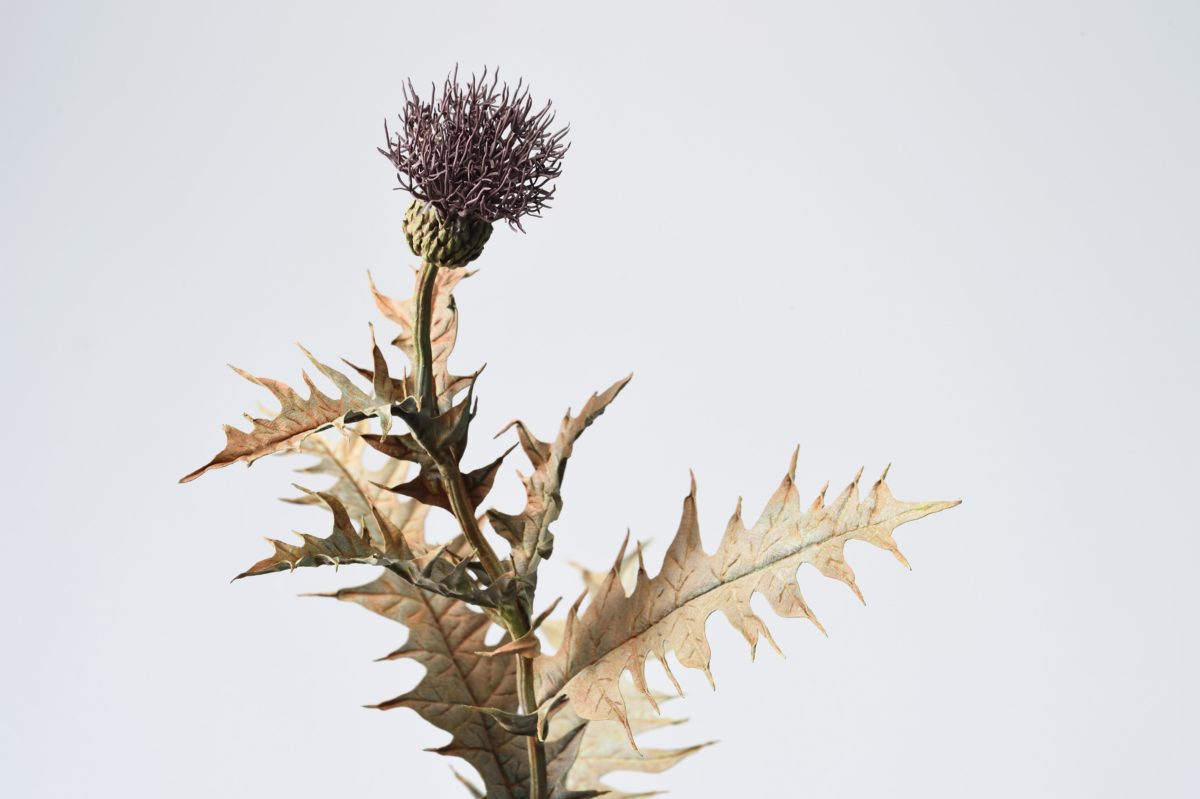
Thistle. Photo: Manabu Matsui

Author
Lisa Nilsson
Author's Bio
Lisa Nilsson is a Swedish freelance journalist based in Copenhagen, Denmark. Kyoto stole her heart back in 2009; she has remained enchanted ever since. Her curiosity (and former job as a flight attendant) has taken her many times around the globe, never going anywhere without her camera. She is a documentary film junkie, etymology enthusiast and a board-game geek, currently working on a children’s book.
Credits
All photos by Lisa Nilsson.
Special thanks to Mariko Yamada for translation, and Alex Krupp for assistance with metalworking terminology.


